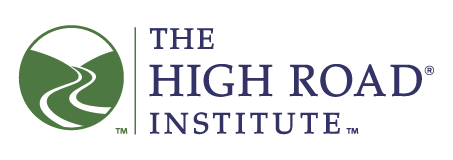Do you or your coworkers suffer from ‘Vacation Deficit Disorder’?
According to a recent Glassdoor Employment Confidence Survey, this problem is faced by employees who feel that they have too much work and cannot take a vacation.
Companies will languish when executives foster a workplace culture where employees have too much work to take a vacation. Employees will experience dizziness, lost opportunities, headaches, declining customer service, low morale, confusion, high turnover and profits going down the drain! (Ouch.)
There is an easy solution to rid the workplace of Vacation Deficit Disorder: Productivity.
A client once said to me: “Productivity looks a lot like common sense because being productive is doing the RIGHT things.”
Many people, especially over-enthusiastic types, believe we are productive. We keep track of our time, check off ‘to-do lists’ and fill up our 10-hour workdays. Is that being productive? The answer to that is part of a bigger question:
Are you doing things right or are you doing the right things?
A productive person is always doing the right things. The right activity is one that moves you forward in achieving a primary objective or reaching a priority goal. All actions that do not aid you in achieving your target are unproductive!
How do you know if you are being productive?
Step 1: Compare your objective against your efforts and end result.
Before you spend 10 hours reconciling a general ledger account, review your original objective. Is it to:
- Spend all day on the problem?
- Detect major discrepancies and determine the proper balance?
- Find the source of the problem and prevent it from happening again?
If your goal is the last one, and will be completed after 10 hours, you are productive.
How can I help my teammates be more productive?
Step 2: Create a culture where employees want to be productive.
In order to improve the productivity of your team, you must light the fire of motivation. The key elements are doing the RIGHT things:
R = Rewards and respect
I = Ideas and involving everyone
G = Get rid of…
H = Have and hit targets
T = Training and teams
Companies that reward employees for doing the right thing have productive employees. When employees are respected for their knowledge and abilities, productivity is high. When you solicit and use employees’ ideas, productivity grows dramatically. The quest for productivity must involve everyone in your team and organization.
Step 3: Get rid of the unnecessary stuff.
Design and foster an atmosphere where it is the norm to get rid of unnecessary tasks. You do this by continually questioning WHY you are performing this task or WHY you are saving this document. A smarter method is to set a monthly goal of improving at least one work process.
Of all the work you do, 25 to 35% of it is unproductive. How do I know if the work is unproductive? Ask the expert – your customers! A powerful question to ask before starting a time-gobbling task is “How will this benefit my customer or client?”
Step 4: Measure what you want because you get what you measure.
If you want guaranteed methods for increasing everyone’s productivity, you need to:
- Provide specific, measurable targets for employees to hit;
- Implement and facilitate self-directed cross functional teams; and
- Provide continuous training.
Do you reward employees for doing the right things? If not, you can immediately increase productivity by reviewing your compensation plans and methods for recognizing people. For example: Do you reward sales personnel for reducing the number of returns, documentation errors or credit issues? Why not? A smarter method is to reward employees for reducing problems instead of creating them.
Self-directed teams are amazing! A handful of people can perform the work of a group twice the size. This is possible because the team learns how to work together for a common purpose. Most importantly, they develop many ways to keep each other in focus and to communicate what they need in order to complete the job on time and with quality.
Less than 10% of American companies provide any formal training beyond the “this is how you do your job” type. It amazes me that the more we invest in technology and equipment to keep up with the competition, the less we invest in the brains that use and operate those tools. The firms that are admired as the best places to work receive thousands of resumes each month. In addition, they provide on-going training opportunities for all of their employees. Do you sense a connection?
If being productive looks a lot like common sense, then you got it! When you are being productive it is because you are doing the right things. And then you and your teammates can take a vacation without guilt or worries!

